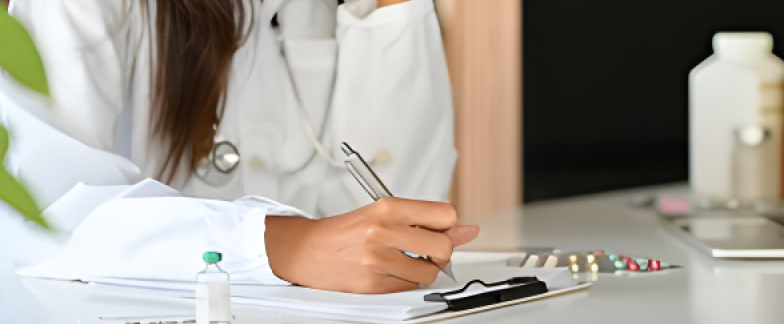Individuals struggling with Substance Use Disorder (SUD) require a recovery plan that includes a variety services. There are many ways treatment plans can be constructed, including services such as group inpatient treatment, outpatient treatment and working closely with a peer recovery specialist. Therefore, clients seeking a SUD treatment need their caregivers to support them in tailoring individualized, personalized care plans. One component of some SUD treatment plan are medication-assisted treatments (MAT) specifically for Opioid Use Disorder (OUD). Suboxone is a medication offered as part of MAT and is commonly used in treatment of OUD (ASAM, 2022).
MAT is an important part of many individuals’ recovery plans, and is often a necessary step in the early stages of a client’s journey. Suboxone is helpful for certain individuals that are struggling with SUD and are experiencing withdrawal from discontinuing opioid use. Withdrawal symptoms are often a barrier to entering treatment and remaining in recovery which created a need for MAT. In this post, we will be presenting what Suboxone is and when it could be a critical part of an individual’s recovery plan.
While MAT is a helpful option for some individuals, please consult your healthcare provider and/or a licensed professional to find out more information on if Suboxone or other medications are the right fit for you.
What is Suboxone?
Suboxone is an oral medication approved for office-based treatment of OUD (ASAM, 2022). Suboxone blocks the effects of other opioids and is composed of two medications: Buprenorphine and Naloxone (ASAM, 2022). Treatment with Buprenorphine and Naloxone has been shown to be safe and effective, and an important part of MAT (ASAM, 2022).
Suboxone has become the preferred treatment medication for OUD and it can be initiated at the beginning of treatment or for clients who are in continued recovery (Addiction Center, 2022). During the initial stages of recovery, Suboxone is used to decrease withdrawal symptoms and which it is useful in curbing cravings. However, while Suboxone plays a critical role in many treatment plans, it is only part of a holistic approach to SUD treatment. Suboxone should be accompanied by treatments such as intensive out-patient therapy, individual therapy, relapse prevention, motivational interviewing, an assessment of psychosocial needs and peer support or coaching.
*Before discussing if Suboxone is an addictive medication, it’s important to differentiate between addiction and dependence. While the terms are sometimes used interchangeably, they mean two very different things.
Addiction is defined as a chronic, relapsing disorder characterized by compulsive drug seeking, a loss of control, continued use despite harmful consequences, and long-lasting changes in the brain. These consequences can start to take a significant toll on various areas of life, including personal relationships and work.
Dependence occurs when your body becomes used to a substance and the person then experiences withdrawal symptoms when they stop using it. Dependence can occur with all kinds of substances, from opioids to antidepressants to caffeine.
In the United States, buprenorphine is classified as a Schedule III controlled substance, meaning it has a low to moderate risk of physical or psychological dependence. Suboxone also has a “ceiling effect.” This means you won’t experience stronger effects after a certain dosage point. For Suboxone, this limit is 24 milligrams per day. If you take more than that amount, you won’t feel any added effects. While a person may develop a dependence on Suboxone, addiction is unlikely because of its “ceiling effect.”

Why is Suboxone Important?
Suboxone is a key component for many clients in recovery. Suboxone availability is increasing for individuals seeking recovery from SUD, but is still not widely accessible. While there is no ‘one size fits all’ approach to treatment, clients are more engaged with their treatment plans when the appropriate options are available.
At Kyros, we believe in a holistic, patient-centered approach to caring for those seeking SUD treatment services. We offer support to meet each client’s needs because we meet them where they are at in their recovery. If you are unsure of how to begin MAT, refer to your healthcare provider for assistance. Your healthcare provider can offer you information to determine if Suboxone could be helpful for your recovery plan. Are you wondering how Suboxone (Buprenorphine plus naloxone) works? Read on to find out more about how Suboxone (Buprenorphine plus naloxone) works.
How Does Buprenorphine Work?
Buprenorphine (the opioid-containing medication in Suboxone) is an opioid partial agonist. It produces effects such as euphoria or respiratory depression at low to moderate doses. With buprenorphine, however, these effects are weaker than full opioid agonists such as methadone and heroin (SAMHSA, 2022).
When taken as prescribed, buprenorphine is safe and effective. Buprenorphine has unique pharmacological properties that help: reduce withdrawal symptoms and cravings, increase safety in cases of overdose, lower the potential for misuse.
Buprenorphine for Opioid Use Disorder: Is this treatment right for you?
To begin treatment, a patient with OUD must abstain from using opioids for at least 12 to 24 hours and be in the early stages of opioid withdrawal. Patients with opioids in their bloodstream or who are not in the early stages of withdrawal, may experience acute (precipitated) withdrawal. Once a patient has discontinued or greatly reduced their opioid use, no longer has cravings, and is experiencing limited side effects, the dose of buprenorphine may be adjusted or eliminated. Due to the long-acting agent of buprenorphine, once patients are stabilized, it may be possible to switch from every day to alternate-day dosing. The length of time you receive buprenorphine is tailored to meet the needs of each individual. In some cases, treatment can be indefinite. To prevent possible relapse, individuals can engage in on-going treatment—with or without MAT (SAMHSA, 2022).
How Do You Administer Suboxone?
At Kyros, Suboxone will be prescribed as a sublingual strip, which are held under the tongue until dissolved. Your healthcare provider will educate you on the proper administration before prescribing. Following treatment initiation with Suboxone, stabilization is the maintenance phase. The maintenance dose of Suboxone sublingual film is generally in the range of 4 mg/1 mg buprenorphine/naloxone to 24 mg/6 mg buprenorphine/naloxone per day, with a target of 16 mg/4 mg as a single daily dose. The optimal maintenance dose of buprenorphine products will vary from patient to patient. Doses should be incrementally adjusted to a level that holds the patient in treatment and suppresses opioid withdrawal effects. Dosages higher than 24 mg/6 mg daily of buprenorphine/naloxone have not been demonstrated to provide a clinical advantage (Indivior, 2015)
Is MAT “Recovery”?
At Kyros we believe that recovery is defined by each individual. We work with clients to provide evidence-based treatment that leads to a more productive and fulfilling life, and that may include MAT. We agree with McClellan & Williams’ perspective that “recovery status is best defined by factors other than medication status. Neither medication-assisted treatment of opioid addiction nor the cessation of such treatment by itself constitutes recovery. Recovery status instead hinges on broader achievements in health and social functioning—with or without medication support” (McLellan & Williams, 2012).
You Decide What’s Right for You
MAT is an appropriate option for many individuals struggling with a SUD. Because Suboxone decreases cravings and withdrawal symptoms, it is highly effective at the beginning of one’s recovery. Withdrawal from opioid use can be overwhelming and sometimes even dangerous. MAT services can greatly lower the symptoms, and risks of withdrawal if administered by a trained healthcare professional.
Sources:
Addiction Center. “Suboxone – What Is Suboxone?” Addiction Center, 2022. https://www.addictioncenter.com/treatment/medications/suboxone/ .
Accessed 2 December 2022.
ASAM. “Medication Assisted Treatment Program.” American Society of Addiction Medicine. https://www.asam.org/docs/default-source/education-docs/mat-program-overview_2-12-2019239e2b9472bc604ca5b7ff000030b21a.pdf?sfvrsn=93224bc2_0 .
Accessed 2 December 2022.
FDA. “SUBOXONE (buprenorphine and naloxone) sublingual tablets.” Federal Drug Administration, 2019. https://www.accessdata.fda.gov/drugsatfda_docs/label/2019/020733s024lbl.pdf.
Accessed 9 December 2022.
Indivior. (2015). Suboxone (buprenorphine and naloxone) sublingual film: Full prescribing information. www.suboxone.com/content/pdfs/prescribing-information.pdf
Retrieved January 22, 2016
McLellan, A. T., & White, W. (2012). Opioid maintenance and recovery-oriented systems of care: It is time to integrate (p. 2). London, England: National Treatment Agency for Substance Misuse.
Peace Medical. “4 Important Advantages of Suboxone Treatment For Opioid Addiction.” Peace Medical, 2022. https://peacemedicalfla.com/4-important-advantages-suboxone-treatment-opioid-addiction/.
Accessed 9 December 2022.





